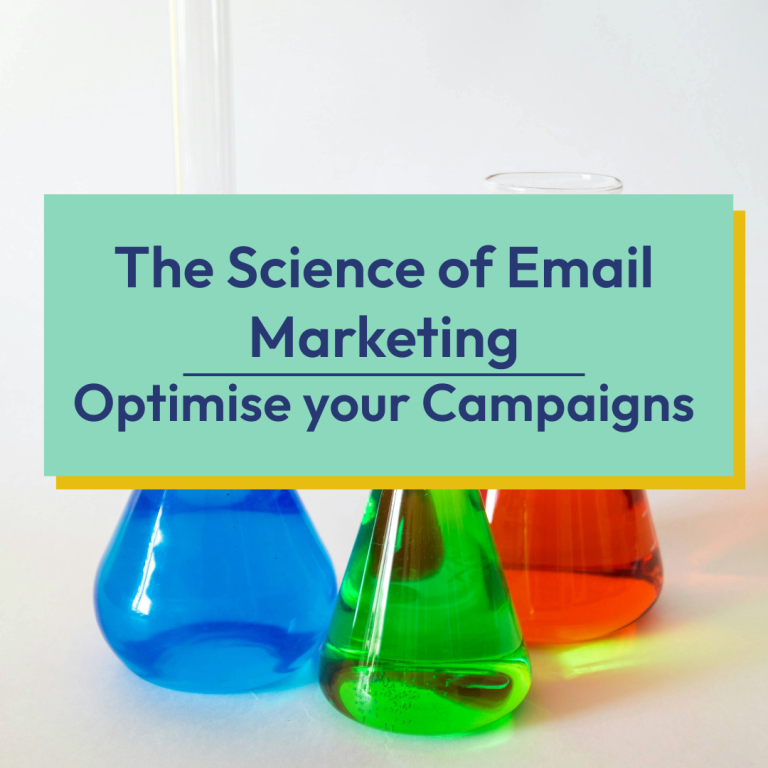Some businesses see their websites as simply a hub for their online presence, a calling card and not much else. Others however, see the purpose of their website as an innovative a source for new business and, ultimately, growth. Are you looking to maximise your web presence through conversion rate optimisation and retention? Then this guide is for you.

Maximising the time your users spend on your site should be a top priority in every aspect of your site. This helps you get the highest return on investment related directly to your business goals. Conversion and retention are key to achieving continuous improvements in your website outcomes.
Step 1 – Identify your Conversion Points
Defining the desired conversion of your business means reviewing your priorities and what actions you most want to see your audience take on the site.
For e-commerce businesses, the conversion point will be located on the check-out page, where the mutually profitable interaction between the site and customer occurs in the act of purchase. If you are looking to build your brand’s online presence, the options for content sharing should be seen as your desired points of conversion. Informative or long-term service-providing businesses may look to tracking signing up for newsletters or downloading a brochure.

Step 2- Keep Track of Your Conversion Rates
Conversion Rates present to the savvy analyst a clear indication of the success of the website. It is especially useful as a vehicle for quality leads and user end-interaction. This is calculated from the total user numbers and the amount that complete a conversion.
Keeping track of your Conversion Rate can help you know where your site may need improving. Conversions signal the quality of your content, the structure of the user funnel, and if these match your business goals.
Step 3- Understand User Retention
Once you have your customers, how do you keep them there, and keep them coming back? Nurturing your user with personalised, high-quality content relevant to the audience segment. This is a consistent method to secure and maintain high-quality, relevant leads.
For subscription services, retention can be measured through user lifetime data. The longer the average user stays with your service, the more successful your retention strategies are. For other types of service, repeat customers are your key metric for retention. This can be found in data surrounding user lifetime sessions and average user engagement scores calculated from session length and event data.
Step 4- Conduct Retention Surveys
When first beginning to plan out your retention strategies, collecting data from your audience is a great place to start. Collecting emails through onsite forms and other contacts through social media communities creates a database of users in your audience. You can categorise these as current, or lapsed customers, providing insight into what is most engaging about your site.
Number-based, actionable surveys produce data you can easily analyse to assess your website. Lending you the ability to make changes to technical web page design or tweak your approach to content.
Asking about the usability of the site structure, diversity, and regularity of content, and the consistency of quality compared to your competition are important areas of insight you can gain through reaching out. Ultimately, the only way you can truly know how to retain more customers is to ask those who you have already successfully retained.
Step 5- Content Search Engine Optimisation
Quality content gets your business ranked on Google and provides a return on investment for years to come. We recommend a consolidated and flexible SEO strategy across your meta-data, blogs, and product pages. This is a cost-effective and genuine way to maximise your content’s lifespan. This ultimately attracts more leads over a longer period of time.
There is nothing better than seeing an old piece of content gain organic users without you having to do a thing! How content marketing works long-term is by providing a consistent so source of interested and engaged user leads, actively looking for content like yours, you can spend more of your time on new avenues for optimisation.
Producing regular and consistent quality of content is a classic retention strategy. Customers keep returning and may complete conversion behaviours multiple times over the course of their customer lifecycles. Using organic retargeting to reach a niche target audience of interested, high-quality leads is the gift that keeps on giving!
Step 6- Calls to Action
One basic conversion optimisation and digital content marketing strategy that is often overlooked are Calls to Action. A clear Call to Action button as part of your web page design template is key to gaining enquiries and converting leads. In order to improve conversion rates, this aspect of a website UI needs to be attractive to the user, but also reflect your critical conversion point.
Retargeting is an additional place where direct calls to action are most important. In email retargeting or paid display ads, you can target users who did not complete conversions to remind them of your business and their progress through your customer funnel. For example, marketing messages personalised to display after a certain interval of the visit to remind customers of what they have left in your e-commerce basket. This can encourage conversion with less effort than targeting brand new customers.

Step 7- Web Design Optimisation
Consistency in the template, tone, and theme of your website design to reflect your brand identity encourages users to continue their journey through your website. A quality site design continues to act as an advertisement for the user, continuing their engagement.
Streamlining the conversion funnel process reduces drop-off rates, getting users to a conversion point in as few clicks as possible. However. this can sometimes appear as blocking user freedom to explore. You can organically foster a rail-roading effect by simplifying your product categories. This makes the product search process easier to understand while still presenting a range of options. This ultimately reduces customer drop-off before the conversion point.
Step 8- Google Analytics 4 conversion labelling
The first step in your conversion analysis is to identify your acquisition and retention data. This will help you understand where your strengths are and how closely they relate to your site goals.
When you connect your site to an analysis program like Google Analytics 4, user interactions with the site are recorded in reports for you to use to track your successes and failures.
Trying to search through this large amount of data can be a difficult task if you don’t know what you’re looking for. Marking events that line up with your business strategy as Conversion Events makes the most relevant data points stand out. You can do this easily with HTML code for relevant pages that send data directly to Google Analytics conversion categories.

However, you can also identify new successful potential conversion events in your data by tracking the most common landing page patterns and user journey endpoints. If a certain type of action such as commenting, searching, or downloading a pdf are common and represents a customer lead that your business finds value in, you can tag these as conversion events and get straight to your analysis!
Step 9- Variation Analysis
A variation analysis relies on a realistic and cohesive vision of your website to be maintained over time. Create a picture of the cause of conversions and user lifetime values with key metrics. These metrics include historic data of the PPC costs, content produced, and large changes you make.
By comparing the actual results with your expected results, you can identify whether or not your investments paid off in the ways you were expecting.
Expected results may be difficult to imagine, especially where past data is unavailable. Usually, an expected figure will reflect the monthly changes in the figures you are looking at, or if you expect seasonality to have an impact on your business, the previous year’s figures. However, estimates or even optimistic goals can be used for these comparisons just as easily as regardless, adjustments of your expected results will be likely.
Step 10- Full Conversion and Retention Analysis
The input of a paid search campaign through services such as Google Ads Manager can be monitored in relation to the amounts of newsletter subscriptions your site gets over a certain period of time. The ratio of spend to subscriptions gained can then be compared to an estimated rate of spend per subscription which represents how much you are willing to spend to gain each subscriber.
To add an element of retention to this data you can then compare the average length of a subscription to the cost per subscription to identify how many months of a subscription your site gains from a certain budget.
In these calculations, you need to ensure that the user data you are analysing can be tracked to your input. For example, make sure the source of the users are from your Google Ads campaign, not from other sources such as organic search. ICN SQUID’s optimisation analysis tool can help provide you with this information in an easy-to-understand, succinct manner, making your data much clearer, so you can get to responding to what you find!
Comparing these figures to your expected outcomes helps you easily demonstrate the success or issues with your strategy and advise future investments or strategic changes.
Work with ICN Media to Revolutionise your Online Optimisation
Our expert analysts, designers, and content writers can provide you with the best assistance to help run your website. We excel in finding the best optimisation strategies that work best for your business to push your brand further.
Book a call today and find out what we can do for you!
Blog by ICN’s SEO Analyst & Content Creator Gemma Gibson


